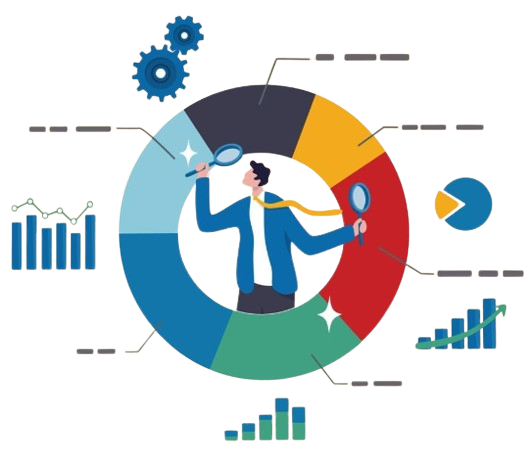Precision Farming Software Services Market Size & CAGR
The Precision Farming Software Services market is projected to reach a market size of USD 10 billion in 2023, with a Compound Annual Growth Rate (CAGR) of 12% from 2023 to 2030.
COVID-19 Impact on the Precision Farming Software Services Market
The COVID-19 pandemic has accelerated the adoption of precision farming software services as farmers seek digital solutions to optimize their operations amidst challenges such as labor shortages and supply chain disruptions. This has led to a significant increase in demand for advanced technology in the agriculture sector.
Precision Farming Software Services Market Dynamics
The Precision Farming Software Services market is driven by factors such as the increasing need for efficient farm management, growing awareness about sustainability, and advancements in technology. However, challenges like high initial investment costs and limited technical expertise may hinder market growth.
Segments and Related Analysis of the Precision Farming Software Services Market
The Precision Farming Software Services market can be segmented based on technology, product, application, and end-user. Each segment plays a crucial role in the overall ecosystem of precision farming software services, catering to specific needs and requirements of farmers and agricultural practitioners.
Precision Farming Software Services Market Analysis Report by Region
Asia Pacific Precision Farming Software Services Market Report
The Asia Pacific region is witnessing rapid adoption of precision farming software services due to the increasing pressure to improve agricultural productivity and sustainability. Countries like China and India are leading the market with large-scale implementation of precision farming technologies.
South America Precision Farming Software Services Market Report
South America's precision farming software services market is characterized by a growing interest in precision agriculture practices to enhance crop yields and reduce environmental impact. Brazil and Argentina are prominent players in the adoption of precision farming technologies in the region.
North America Precision Farming Software Services Market Report
North America dominates the precision farming software services market, driven by the high level of technology adoption in agriculture and the presence of key market players. The United States and Canada are key contributors to the growth of the market in the region.
Europe Precision Farming Software Services Market Report
Europe's precision farming software services market is experiencing steady growth, fueled by regulatory support for sustainable farming practices and the implementation of digital solutions in agriculture. Countries like Germany and France are at the forefront of precision farming technology adoption.
Middle East and Africa Precision Farming Software Services Market Report
The Middle East and Africa region are witnessing a gradual uptake of precision farming software services to address food security challenges and improve agricultural productivity. Countries like Saudi Arabia and South Africa are exploring precision agriculture solutions to enhance crop yields.
Precision Farming Software Services Market Analysis Report by Technology
The precision farming software services market is segmented based on technology, which includes GPS technology, remote sensing, variable rate technology, and integrated electronic solutions. These technologies play a crucial role in optimizing farm operations, improving efficiency, and enhancing sustainability.
Precision Farming Software Services Market Analysis Report by Product
The product segment of the precision farming software services market includes farm management software, weather monitoring systems, crop monitoring software, and irrigation management tools. These products aim to provide farmers with real-time data and insights to make informed decisions and optimize farming practices.
Precision Farming Software Services Market Analysis Report by Application
The application segment of the precision farming software services market covers areas such as yield monitoring, field mapping, soil monitoring, crop scouting, and livestock monitoring. These applications enable farmers to monitor and analyze various aspects of their farming operations to improve efficiency and productivity.
Precision Farming Software Services Market Analysis Report by End-User
The end-user segment of the precision farming software services market includes large farms, cooperatives, and contract farming organizations. These end-users leverage precision farming technologies to optimize resource utilization, reduce operational costs, and maximize agricultural output.
Key Growth Drivers and Key Market Players of Precision Farming Software Services Market
The key growth drivers of the precision farming software services market include increasing adoption of digital agriculture practices, focus on sustainable farming solutions, and advancements in technology. Key market players in this industry include:
- AgLeader
- Deere & Company
- Trimble Inc.
- Topcon Positioning Systems, Inc.
- Iteris, Inc.
Precision Farming Software Services Market Trends and Future Forecast
The precision farming software services market is witnessing trends such as the integration of artificial intelligence, blockchain technology, and IoT devices in agriculture. The future forecast suggests continued innovation in precision farming technologies to address challenges and optimize agricultural operations.
Recent Happenings in the Precision Farming Software Services Market
Recent developments in the precision farming software services market include partnerships between technology companies and agricultural organizations to enhance digital solutions, acquisitions of key players to expand market presence, and the launch of innovative products to meet the evolving needs of farmers.



